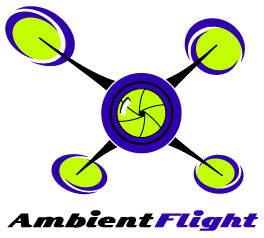

Last week I managed to roll some video with the new gimbal down in southern Utah. The results were fantastic.
I’m limited by the air time I have though, at a safe time of about four minutes with the reduced setup (3-axis gimbal, small mount, 3D printed landing gear extensions, stock DJI Phantom 1 battery).
Some friends critiqued the video and made some great suggestions and observations. One observation is that there’s still a tiny bit of “jello” effect at some points. The jello effect comes from the drone vibrating the camera. The video shakes and looks like jello shaking.
Two directions to go with the jello are to balance the propellers and to work on the mount for the camera. I did both, and tried some new batteries. There were good and bad results.
The new batteries are 2700mAh compared to the stock DJI batteries which are 2200mAh. The net result was over seven minutes in the air, a great improvement. Since the battery is bigger though, it is much harder to get into the craft. Good. More flight time.
I thought perhaps that the rigged setup I had last week was part of the reason for the slight jello issues. The new gimbal came with eight jello reducing rubber grommets and I flew with four. That’s the only way this rigged setup would work. First test today I put back on the small mount with eight jello reducers. The problem there is that the mount blocked the battery door from opening all the way. So I got some throw-offs at a local electronics store and lowered the mount half an inch. See image below:
The result was horrible. The camera and craft were jiggling terribly.
At that point I decided to go back to the big mount and leg extensions which I purchased with the gimbal. This time though I went with the shorter of the two possible setups (image below).
I ran into some jello issues again. I’m thinking perhaps the reason is that the eight grommets are too solid and don’t isolate the camera from the body of the copter. So my first test tomorrow will be to take four of the eight grommets out and see what effect that has on the jello.
Another small issue too, is that the blades are sometimes visible in the video frame. This issue may lead me to putting the longer leg extension setup on, as it moves the camera farther from the blades.
In Short
To make a long story longer, I’ve increased flight times which is great. I’m not satisfied with the shake reduction yet and still working to improve that issue.
On the jello effect, I understand running the video at 60 frames per second instead of 30 helps. I may try that too, but unfortunately I think the GoPro will not allow the timelapse photo mode to run simultaneously with the 60 frame setup. Right now I’m shooting 30FPS video and photos every two seconds, which is great.
The excitement of getting my DJI Phantom quadcopter with 3-axis gimbal airborne was quickly diminished when I found out that the bird was heavy, sluggish, and very low on the flight time. The landing gear extensions, camera mount, and gimbal add quite a bit of weight to the unit.
If I absolutely have to go with that setup, I can. I’ll be able to get 3-3:30 worth of GREAT video per flight before each battery tanks. When it tanks the unit drops out of the sky quickly. Caution is necessary. Can’t fly it too far away or I won’t have time to get ‘er back before she crash lands.
Today I tasked myself with trying to get the 3-axis gimbal installed but without the heavy landing gear extensions and mounting platform. I took those off and found a way of mounting the gimbal to my old jello mount simply by rotating the mount about a half an inch.
By taking off the extended landing gear and the mounting platform I was able to shave off about 1/4 pound of weight. As a perspective, I can imagine trying to fly the copter with a McDonald’s Quarter-Pounder on it. WIthout the 1/4 pound it will certainly fly a little better and a little longer. I’ve heard as much as a second per gram. The old weight was 1,360 grams and the new weight is 1,247. Below is the 2.75 pound setup:
I’ve got some new accessories on order to combat the flight time issues. Yeah, more costly accessories. What else is new?
I’m changing to the propellors which come on the new DJI Phantom 2. They’re bigger and more efficient. They’ll provide more lift. That means more flight time and perhaps even better handling with the load.
I’ve also ordered a couple of more powerful “LIPo” batteries. The stock batteries which come with the Phantom 1 are 2200mAh and these new ones are 2700. They should provide more power and a little more flight time.
I’m hoping reducing the weight of the copter combined with the new props and more powerful batteries will bring that flight time up from 3:30 to something a little more usable, like 6-7 minutes.
This weekend I’m planning a golf trip south. Many courses other great spots in sceninc southern Utah to fly and shoot. Lots of material should be forthcoming.
Three months ago I didn’t know what a gimbal was. Three months ago I wouldn’t have any clue as to why I’d need “quadcopter landing gear extensions.”
Today both of those items are installed…
The gimbal, a device which levels the camera, extended beyond the standard landing gear on my DJI Phantom. I found some extra feet made on a 3D printer from a Canadian guy on eBay and they arrived, albeit late, today.
The next step is to get power to the gimbal unit.